Happy coincidence or destiny? Museum expansion involves the right space at the right time
For more than 90 years, the Washington County Museum of Fine Arts has housed an impressive collection of artwork from its perch above City Park's lake.
So impressive, according to Executive Director Sarah Hall, it turns heads.
During a visit to the Maryland General Assembly, she recently told the Washington County Commissioners, she met a man who said, "your museum, oh my God, I walked in, I turned left, I saw a Toulouse-Lautrec. I turned around, I saw a Picasso. I turned to my wife and I said, 'Where am I?'"
The museum also hosts a number of traveling exhibits during the year.
But if you think all that's happening there is displaying great art — which would be enough, for some — think again.
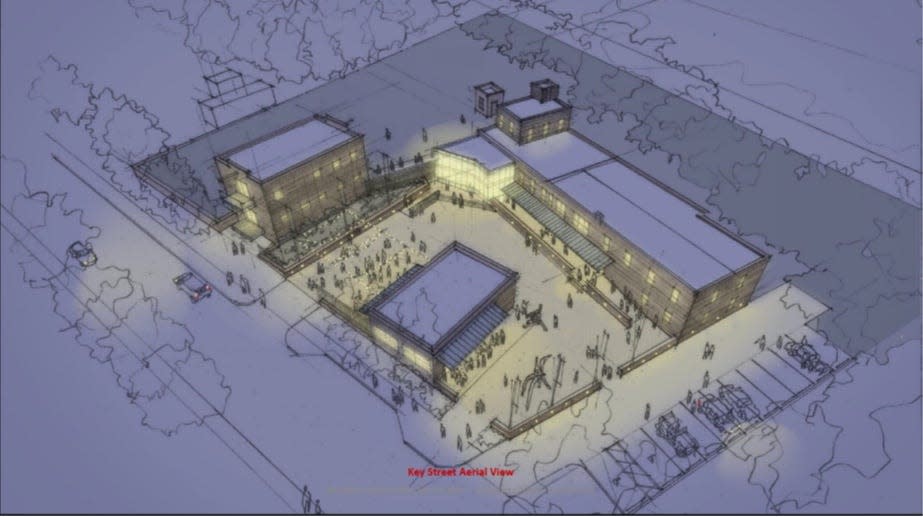
Art classes, concerts, lectures, family activities and lots of other events take place at the museum all the time. And now, the museum is about to embark on a new chapter with the potential for turbo-charging everything it's already doing — and adding even more.
Opportunity knocks
"We were in a quandary when I first came here," Hall, who joined the museum in 2020, told the commissioners. "We were having meetings with staff talking about how do we grow."
Backstory: Washington County Museum of Fine Art gets $3.5 million grant to grow, create 'art campus'
Because the museum is a historic structure, there are limits to what can be done with it, she said, and the viewshed across the lake "has to be protected and maintained."
As with so many things, the pandemic interrupted any plans. But expansion discussions resurfaced "a little bit more quickly than I expected," Hall told Herald-Mail Media, and part of that was prompted by the stadium project (now underway along Summit Avenue and Baltimore Street) and the all of the activity, the sort of renaissance that's happening in Hagerstown."
Museum officials considered various solutions, including putting a satellite site in the former Herald-Mail building at 100 Summit Ave.
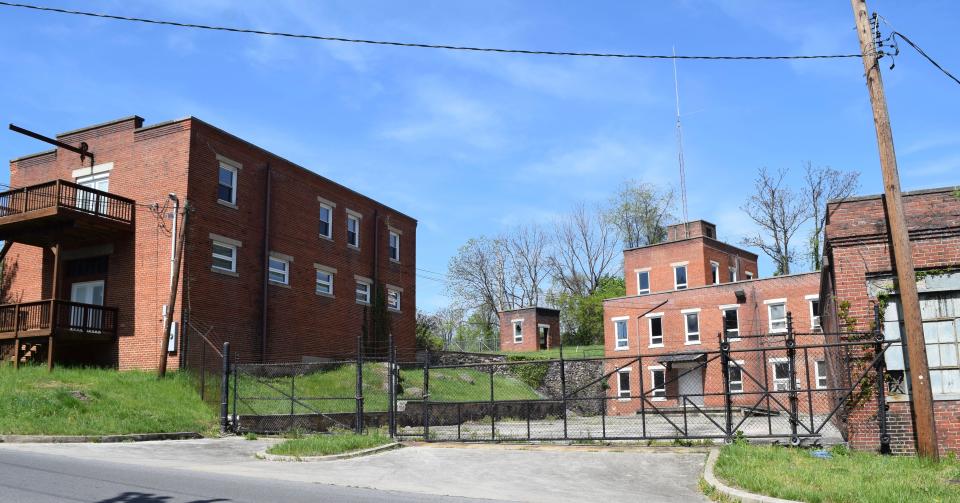
Finally during one of these meetings, someone mentioned the former Bock Oil property at the end of Key Street, near the Jonathan Hager House, that had been for sale "forever."
Phone calls were made.
Deals were done.
And last summer, the museum board announced plans for transforming the c. 1900 buildings into an educational campus after receiving a $3.5 million state grant toward the project.
And not a moment too soon. Hall told the commissioners that in the last pre-pandemic year, 2019, the museum hosted 159 classes with more than 2,000 participants. But classroom space at the museum is limited — Education Director Kellie Mele said registrations for the children's Saturday morning program fill up "within a couple of days after applications going out."
Sometimes the classes sell out and she has to start a waiting list.
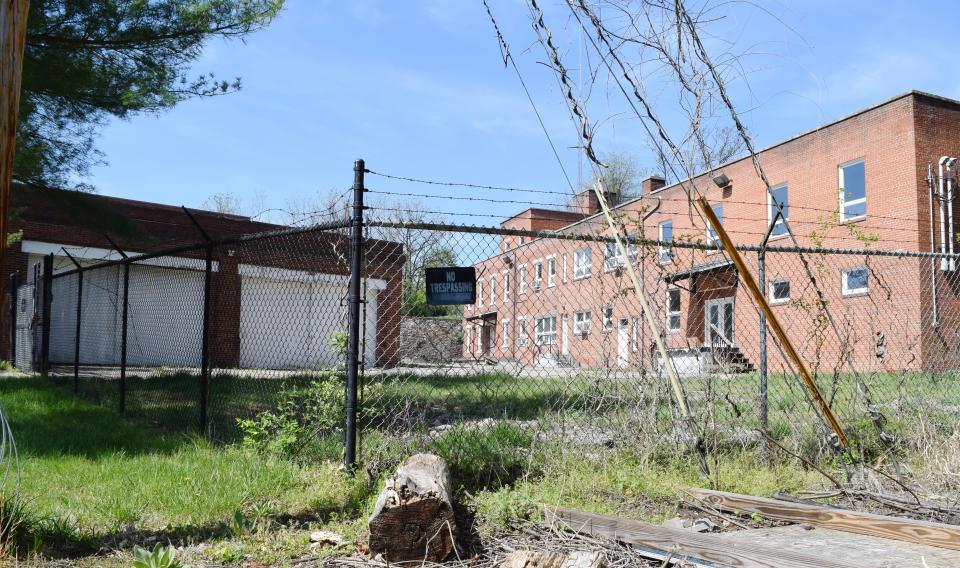
The main Key Street building will house classroom and office space, display space and event space.
Putting an arts campus on the Key Street property might have been destiny; Hall told Herald-Mail Media the property had been mentioned among board members as early as 2016, and that the former owner (who purchased the property from the Bock family in 2001, according to state property records) had envisioned a similar use for it.
"He was inclined to work with us because it was his dream, too," she said.
"Almost every time I'm there, somebody pulls over and asks, 'What's going on with this property?' People are so interested in that property."
In fact, as Hall was opening the gate to escort Herald-Mail Media onto the Key Street property for photos, a man walked up and asked whether the property was still for sale.
"No," Hall said, with not a little satisfaction. "The museum owns it."
What will the museum do with all that space?
Hall said she wanted the expansion to "solve as many problems as possible." So a master plan was drafted with the aid of Boston-based Schwartz/Silver Architects, gathering information on what were seen as constraints on the museum's activities.
"The logical answer was that we could basically move our education department over to Key Street and have more room for teaching, for interactive hands-on activities," Hall said, "maybe experimental things with contemporary art there because it's a different sort of space."
Part of the strategic plan, she said, was a desire for space that seemed "hipper, younger, more fun — ways we could combine education with social events and attract a sort of different demographic."
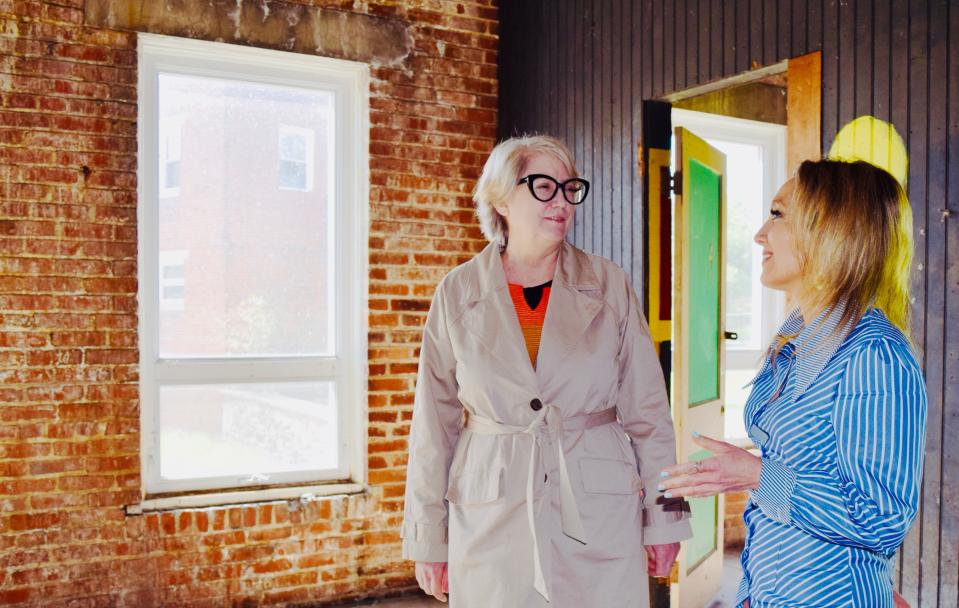
And while all the museum staff are excited about the expansion, probably nobody's more pumped than Mele.
"Currently we can't offer certain things here just because of our space limitations, and it's more of a formal setting," she said. "So when we go over to Key Street, we'll be able to offer pottery classes; we can't have a kiln here."
Fortunately, the Key Street property came with its own outside pumphouse, ready to house a kiln where heat can't pose a threat to the museum's collection. See? Destiny.
"It's perfect, because you can walk right out the second floor (of the main Bock building) into the kiln area," Mele said.
The extended campus also will provide space to host an artist in residence to "work with the museum's collections and exhibitions, or could bring new artwork to the community," she said.
The museum hopes to bring in regional artists "or even further away" who would connect to the community, she added.
"We'd be able to bring the community in and expose people to different types of art, which is part of our mission as it is, but we'd be able to offer more contemporary art."
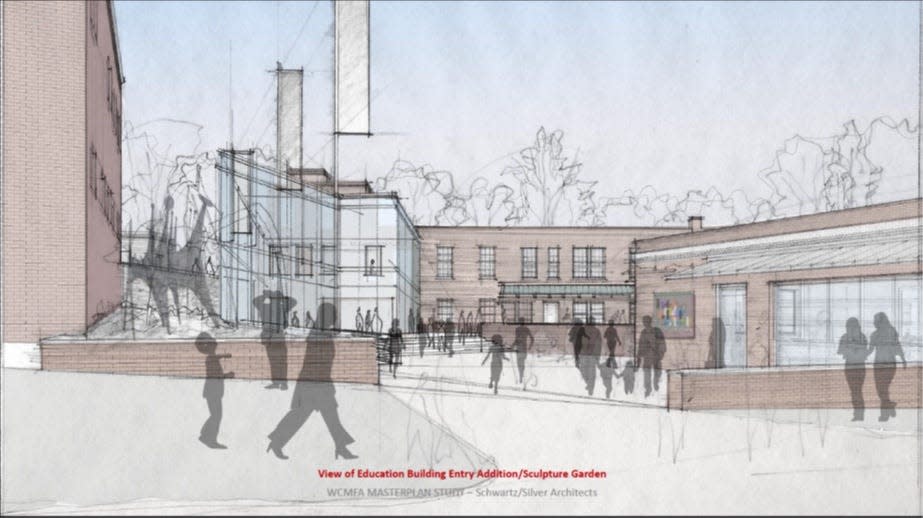
The former Bock property includes a main warehouse building, which would house offices, classrooms and exhibit space; stables (from when the oil company used horses and wagons to deliver goods) and a large garage building.
The stables will likely be converted for artist-in-residence use, with living space on the upper floor and display space downstairs. The garage will be converted into an event space with a catering kitchen. A courtyard will connect the buildings.
The campus "would also be a great resource for the public schools and private schools as well," Mele said. "We currently serve Washington County Public Schools with a museum literacy program. We have to limit the amount of students that can visit us at a time, and this would open it up to more students, it would open it up to more programs happening simultaneously.
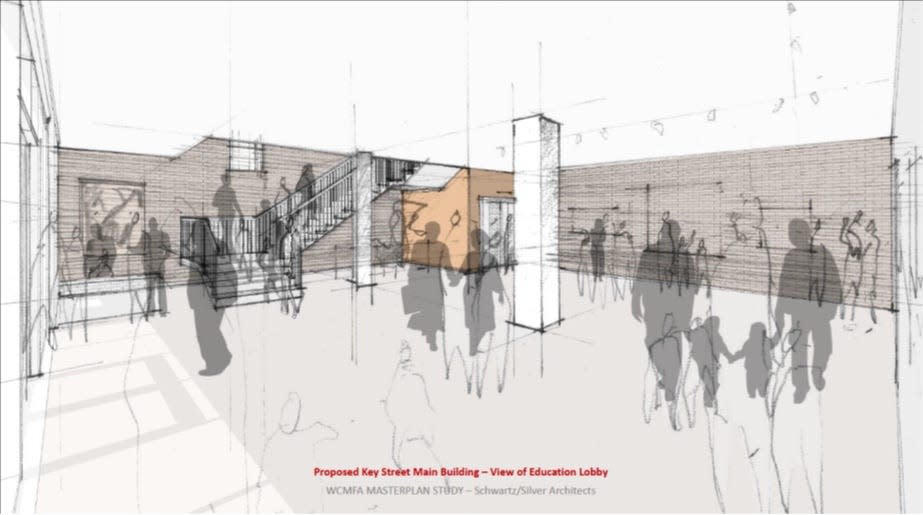
"Students would be able to experiment with art-making with an artist in residence, be able to take in the collection and make a day out of a trip to the museum rather than just an hour with some art."
The museum could also expand its summer camps programs, "to be able to have more longer, full-day camps throughout the summer," she said.
"We'd also like to be able to offer more concerts, maybe get some more regional music involved as well," Mele said, "maybe bring some bigger names for concerts. We have that outdoor space, so I can see things happening in the summer."
Moving some of these activities out of the main museum building will also give the staff an opportunity to reconfigure that space. Hall said the plan is to expand the lobby area, which quickly becomes congested when there's a special event or exhibit, toward the parking lot. That also will make room to expand the museum shop.
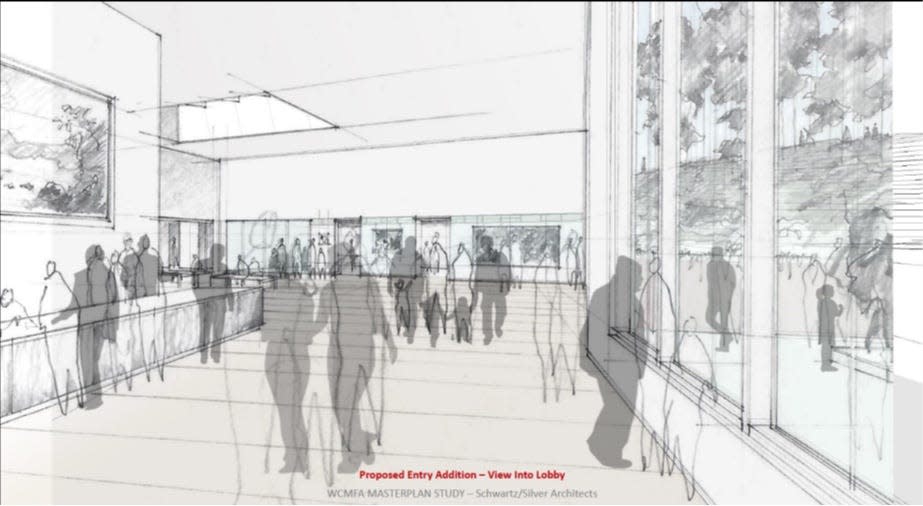
And it will give the museum an opportunity to attract larger traveling exhibitions and better showcase and store its vast permanent collection — which will remain in the original museum building.
"Our collections are not going over (to the Key Street buildings), you'll never see us carrying the Thomas Moran, the Frederick Church and the Norman Rockwell across the street to the new place," Hall said. "It's a different sort of space."
A by-product of the redevelopment of the Bock buildings will also be a better flow between the park, the museum and the Hager House, she notes.
From destiny to destination: A 5-year plan
The entire project is currently estimated at around $18 million. Museum officials are preparing to embark on a fundraising campaign, and Hall hopes to have work begin in late 2024.
"And it's going to take probably a good four or possibly five years to get through building both parts of the project," she said.
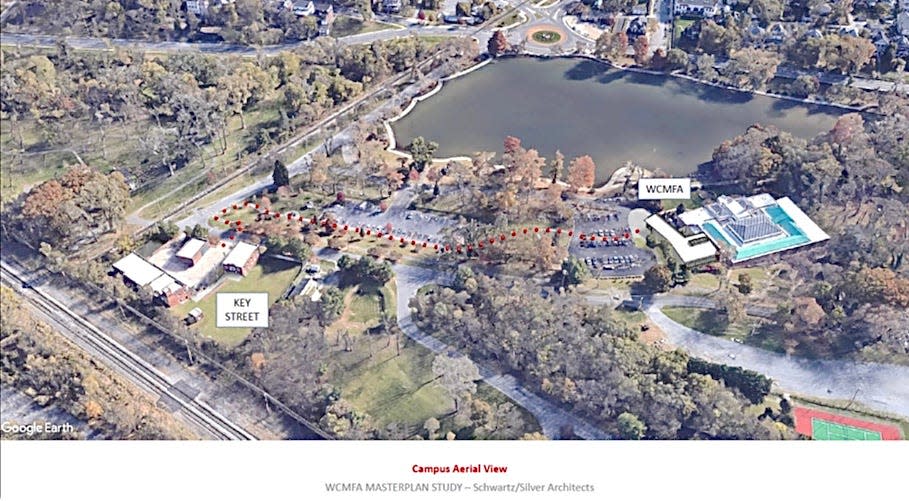
The education campus will come first, and take about two years to complete, she said. Museum operations would then move into those buildings while work is being completed on the main building, offering "pop-up" exhibitions in the education center.
"It's a lot of work," Hall admitted, but added that one "of these various goals that we're hitting through this … is this idea of being able to take larger exhibitions and have a more ambitious exhibition program that will help drive regional tourism."
Museum officials hope to raise about $12 million of the project's cost through private philanthropy.
"We're still in campaign preparation phase," Hall said. "There's a stage called the 'quiet phase,' which is when you really raise most of your money with larger gifts that you get early one. And so it's anticipated that quiet phase will be about 18 months, probably from this June through the end of December 2024."
The goal is to raise about 80% of the needed funds by then.
This project "is our future," Hall said, "whereas the idea of a satellite downtown would probably be temporary; we would be tenants. It would be less connected to our core mission.
"Here, this is our property. This is our future. This is really the next century of the museum."
This article originally appeared on The Herald-Mail: Museum moving forward with expansion, art campus

